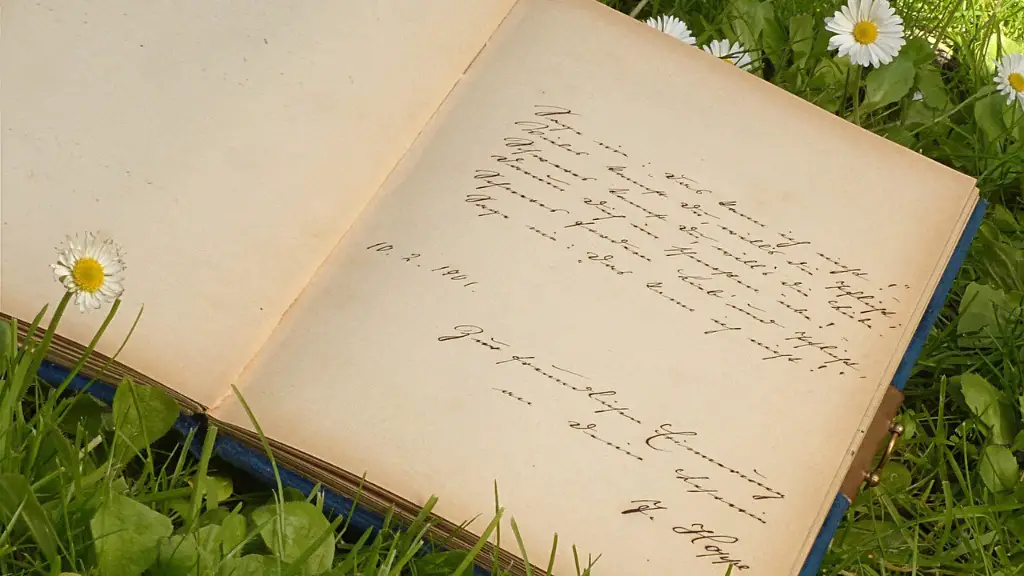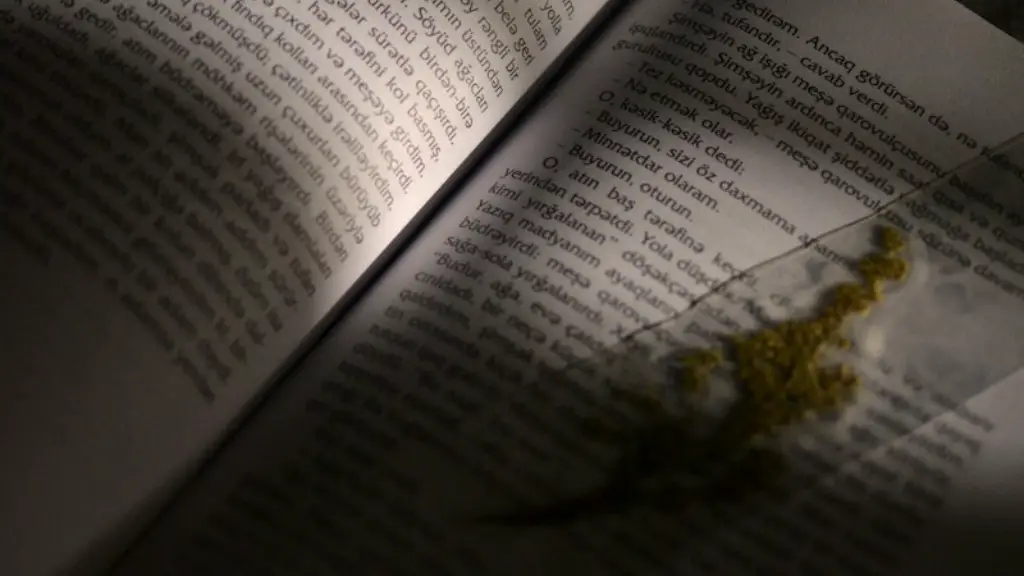The Anatomy of Poetry
Poetry is a powerful and emotive form of literature that has been used for centuries. It is often regarded as an art form, expressing the creative and imaginative thoughts of its author. It can provide profound insight into a wide range of themes and topics by using a synthetic blend of music, imagery, and rhythm. At its core, the purpose of poetry is to inspire, evoke emotion, and convey a story in a unique way.
Although the definition of poetry has been debated for centuries, there are a few defining features that all poems share. Firstly, poetry has an established structure, typically including rhythm and rhyme. Secondly, poetic language focuses on metaphors, analogies, and other figures of speech to capture the reader’s imagination. Thirdly, poetry typically conveys a narrative or feeling that resonates emotionally with its audience.
When writing poetry, authors typically choose a central theme. This theme can range from abstract ideas, such as heartbreak or joy, to more tangible themes, such as war and politics. Poets may also choose to focus on an individual’s perspective, looking inward to the human condition. For example, the Poet Laureate of the United Kingdom, Carol Ann Duffy, often writes poems that focus on a woman’s perspective, discussing topics such as feminism, love, and loss.
When studying the history of poetry, ancient civilizations often emerge as some of the most important contributors. Ancient Greek and Roman poets, such as Homer, Sappho, and Virgil, are regarded as some of the most influential figures in literature. In addition, ancient Chinese literature offers a unique perspective on the art of poetry—writers such as Qu Yuan, Li Bai, and Wang Wei are renowned for their works.
Modern Poetry
Modern poetry is often associated with the Romantics, a movement in the early 19th century focused on depicting the beauty of nature and the power of individual emotion. Writers such as William Wordsworth, Samuel Taylor Coleridge, and Percy Bysshe Shelley are considered some of the most significant and influential poets of the era.
Since then, poetry has continued to evolve and modern poets have explored a much wider range of topics. The advancements in technology and the rise of distinct subcultures have all had an influence on contemporary poets, who have responded to these changes in their works. For instance, a notable poet of the 21st century, Alina Reyes, uses her words to confront online harassment, expressing the emotions of a generation of women who are all too familiar with this issue.
In today’s world, poetry has become increasingly accessible, thanks to digital technology and social media. Authors and aspiring poets now have an extensive range of communities and platforms, such as Instagram, where they can share and get feedback on their works. This has made it easier than ever for aspiring poets to gain recognition and build a readership.
Different Forms of Poetry
The variety of different poetic forms and styles reflects the wide range of themes and topics explored in poetry. Common poetic forms include sonnets, haikus, and blank verse. Each form has its own unique structure and style and can be used to express a different emotional sentiment. Haikus, for example, focus on brevity and the physical sensations of nature, while sonnets are often used to express feelings of love and longing.
Many poets have explored the idea of using poetry as a form of protest and protest poetry dates back centuries. Poets such as William Blake, Langston Hughes, and Maya Angelou have all used their works to speak out against injustice and inequality. This boundless capacity for poetry to spark change is what makes it such an exciting, enduring form of literature.
The Power of Poetry
Poetry has the power to ask uncomfortable questions, challenge social conventions, and inspire generations on a universal level. By encouraging thought and reflection, many poets have used their words as a form of protest to draw attention to social injustice. Notable examples include Langston Hughes’s poem “To Allow All Earth Becomes Our Home” and Maya Angelou’s “Still I Rise”.
Inspired by the powerful words of others, poets can use their works to spread a message of hope, acceptance, and kindness. For example, Jane Segle’s poem “Peace” describes an inner strength that can be found in order to achieve peace and harmony, regardless of the challenges life may bring. Similarly, poet and activist Amanda Gorman’s poem “The Hill We Climb” focuses on the importance of finding common ground and embracing each other’s differences.
No matter the message or purpose, the power of poetry lies in its ability to tell stories and evoke deep emotion. Through careful use of imagery and language, poets can take an idea and make it accessible to people from all walks of life. For these reasons, poetry will continue to be a source of inspiration for generations to come.
The Fusion of Poetry and Music
The combination of poetry and music has been a source of creative inspiration for centuries. From ancient Greek plays to modern rap music, poets and composers have often looked to each other to create new forms of art. This is evident in the traditional poetry of Irish music and the works of German poets such as Johann Wolfgang von Goethe and Friedrich Schiller, both of whom wrote lyrics to accompany their poems.
Often, this combination of poetry and music results in a deeper emotional connection with the listener. This is especially noticeable in folk music, which typically relies heavily on poetic themes, such as love, nature, or death. Similarly, in the modern era, hip hop and rap often blur the lines between spoken word poetry and music, exploring themes such as racial injustice and urban life in a powerful and emotive way.
The Evolving Nature of Poetry
Poetry has seen a resurgence in recent years, with modern poets pushing the boundaries of their art form by experimenting with different techniques. Writing for the stage, moving images, video art, and music videos have exposed poetry to wider audiences. This new wave of poets often do more than just write on paper—they explore a range of creative outlets to share their works with the world.
By embracing the creative spirit within, poets have challenged the well-trodden paths of conventional poetry, creating new styles and forms of expression. For example, spoken word poetry is becoming increasingly popular, as it allows for a unique combination of performance and storytelling. Similarly, Creative Writing Classes have also given poets a platform to explore the breadth of the art form.
The Spirit of Poetry
Poetry is often viewed as an art form that transcends boundaries and limitations, allowing authors to tap into their imagination and emotions. It serves as an outlet to express feelings and tell stories. Regardless of the chosen style or theme, all forms of poetry share a common spirit: that of creative expression.
Poetry has no universal definition, as it is a unique expression of the individual poet. Therefore, there is no wrong way to write poetry. Most importantly, it is the creativity and originality of the poet that is the driving force behind a great work.
The beauty of poetry lies in its ability to capture a moment in time and stand the test of time. By pairing beautiful words with powerful imagery, poets have the power to move and inspire readers in ways that no other form of communication can. The words of a poem are both timeless and timely, a precious gift that will remain with us long after they were written.

